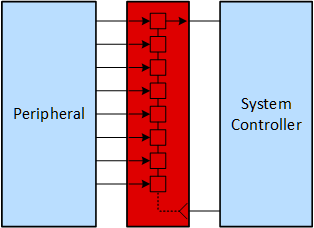SCLA036 October 2020 SN74HC165
Microcontrollers often have a very limited number of GPIO pins. Parallel-in serial-out shift registers can be used to read in a large number of input signals while only utilizing a few GPIO pins from the controller.

See more about this use case in the Logic Minute video Increase the Number of Inputs on a Microcontroller.